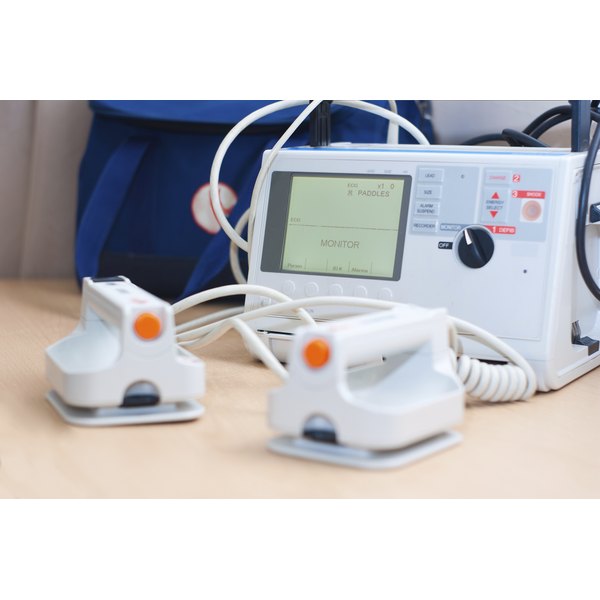-
Asked by anon-205671 to Russell, Kathryn, Jose Angel, Gabriel, Affelia, adeliegorce on 2 Mar 2019.0
Question: how doses the heart beat work
- Keywords:
-
Russell Arnott answered on 2 Mar 2019:
that’s actually quite a complicated question (especially as I’m not a human biologist!). Essentially the heart is really complex organ made up of 4 chambers (2 ventricles and 2 atria) valves, with veins (where blood goes in) and arteries (where blood goes out).
Each heart beat is caused by an electric signal from your brain. This electric signal flows through the heart and makes the chambers expand and contract while valves open in the right order to pump blood all around your body.
It’s pretty amazing that we can do that without having to think about it!
-
Gabriel Gallardo answered on 4 Mar 2019:
Your heart beat is actually controlled by two different parts of your body!
The heart itself knows how to keep a steady beat without the brain. In fact if a person’s brain dies, or if you remove a person’s heart from their body, the heart can still continue to beat!
The brain stem – the part of your brain in between the spinal cord and the rest of the brain – can adjust the heartbeat according to what you’re doing. If you’re just sitting around watching TV, then your brain stem tells your heart it can beat a little slower; if you’re running a marathon, then your brain will tell your heart to beat faster.
As Russell said, there are 4 chambers in your heart, 2 ventricles and 2 atria. They are connected to your lungs and to the rest of your body. The atria take blood into the heart, while the ventricles pump the blood out.
You take in oxygen from the air through your lungs, where it passes into your blood. The blood goes from your lungs into the left atrium, then to the left ventricle, where it is pumped out to the rest of your body.
Your body (muscles, brain etc) uses the oxygen in your blood to do whatever it needs to do – run, jump, think etc – and replaces the oxygen with carbon dioxide. Carbon dioxide is a waste product that must be removed.
So the blood comes into your heart from your body through the right atrium, then it goes to the right ventricle, where it is pumped back into your lungs. The carbon dioxide you made goes into your lungs and out into your breath, while the oxygen in your blood is topped up.
-
Kathryn Boast answered on 4 Mar 2019: last edited 4 Mar 2019 10:01 am
The heart is like a pump. Maybe you’ve used something like this to pump up an airbed?

A pump like this one pushes out air, but the heart pushes out blood. In this pump, your leg is providing the force to push the air out of the pump, but the heart is made of muscles that can provide this force. It’s like it squeezes itself!My favourite bit about heartbeats is how all the muscles in the heart know to squeeze at the same time. Think about the drummers at the start of this piece of music
They all play at the same time and provide a big THUMP of a beat. They know when to play because they have a conductor at the front who tells them when to play. The heart has “cardiac pacemaker cells” that do the same job. These pacemaker cells provide the rhythm that your heart beats along to.It can go wrong though. Sometimes the heart seems to stop listening to the rhythm, and the muscles get out of sync, twitching randomly instead of all squeezing together. This is called “fibrillation”. One way to fix this is to use a “defibrillator”! You might have seen them used on TV or in films.


(Don’t worry, these are actors, not real unwell people!)
The defibrillator will have pads or paddles with cables coming out of them, and they put them on the patient’s chest. The defibrillator then gives the heart muscles a big electric shock. This makes the heart muscles stop twitching, and resets them. Once they are quiet, they can hear the rhythm of the pacemaker cells again and join in. The muscles start squeezing all together again, and the heart goes back to beating as normal. -
Jose Angel Martinez-Gonzalez answered on 4 Mar 2019: last edited 4 Mar 2019 10:06 am
I think Russell, Gabriel and Kathryn have responded to you in a great way. I, who am not an expert on these issues, can only contribute a video to your comments, where you can see what they have already told you.
Also just say how interesting is our brain that is able to continue controlling things even if we are not thinking about it.
-
Asked by anon-205671 to Russell, Kathryn, Jose Angel, Gabriel, Affelia, adeliegorce on 2 Mar 2019.
Question: how doses the heart beat work
- Keywords:

Comments